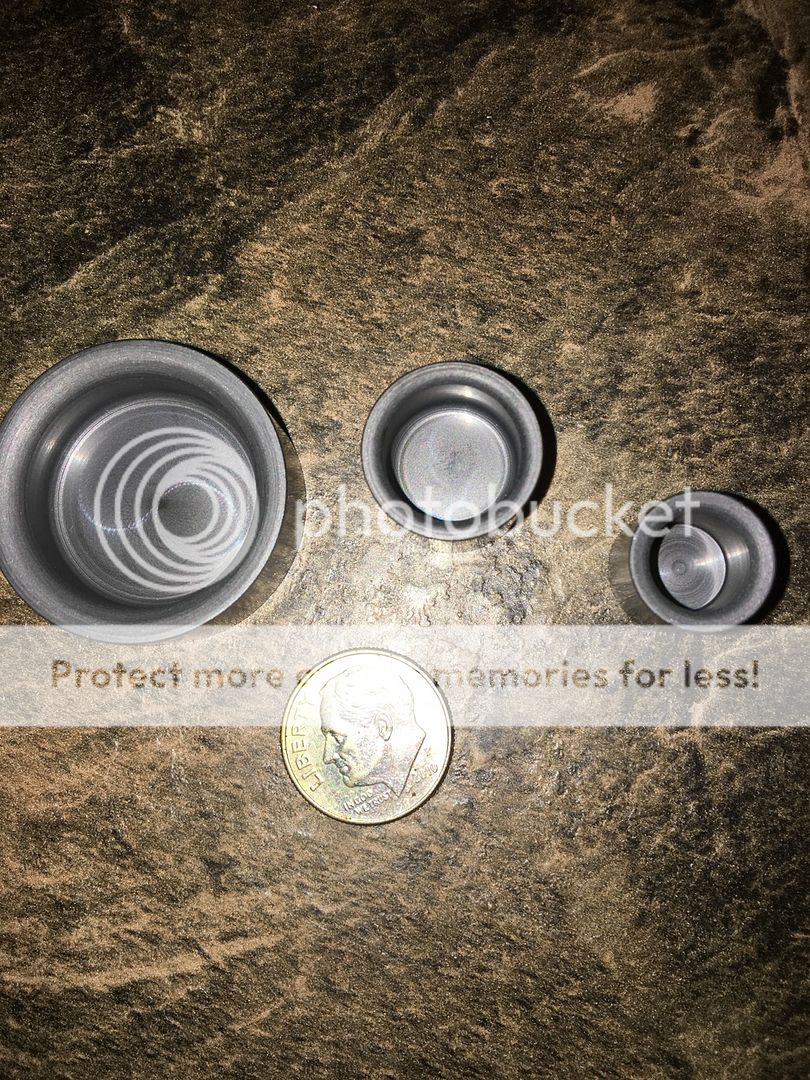alittledabwilldoya'
Sapphire Powered Dabstronaut.
Can you please explain why...why is Halo in Sapphire better than Liger with SiC/Quarts but Halo in SiC/Quartz is not? I'm a bit confused here.
Thanks
In my experience, which is admittedly not super extensive as I've only dabbed for a year, the dabbing experience is primarily affected by the surface material one is dabing upon.
I don't dab on Ti.
I started on Quartz, and it is okay.
SiC is fantastic (I haven't used other ceramics and it seems that SiC is ideal for dabbing because of it's cost, thermal qualities, durability, and chemical inertness); after using it I wouldn't use Quartz.
Sapphire is even better than SiC.
Sapphire advantages:
One can run at a lower heater temperature and get the same vaporization effects.
I typically run my Quartz Halo @715* & SiC Halo @ 625* both w/o the heat retainer; Sapphire Halo @600 with the heat retainer (I'm sure the retainer soaks up some heat so the effective difference in temperature is actually greater than it appears).
IIRC the sapphire surface sublimates the vapor into smaller particles.
Taste is noticeably more intense when using a sapphire surface.
Sapphire has excellent chemical resistance, even higher than Silicon Carbide for some chemicals, and is more inert than Quartz and Alumina.
The Sapphire Halo has the Wik tec surface which is designed to facilitate the spread of fluids via capillary action.
The Wik surface combined with the sapphire surface itself seems to lead to more complete vaporization of one's dab when compared to using a SiC Halo (purely anecdotal, but I am a daily user, and I haven't vaped anything but concentrate for the past year).
Disadvantages:
Cost: $300 for the Halo alone.
Durability: It's hard, 9.5 on Moh's scale.
But it's brittle; don't drop it.
I think that the overall design of the LigerV2 is superior to the D-Nail Halo design, with a few small exceptions:
I prefer the small, light D-Nail carb-cap, and like the overall air flow through the D-Nail bases; the Liger has a more restricted draw.
This preference is completely subjective and is also dependent on different rig's overall airflow.
I also like the overall lighter weight, greater surface area, and better visibility offered by the D-Nail set-up.
But, the Liger is more efficient overall.
Plus the issues of surface area and ease of viewing will be addressed in V3.
The Liger wins when using like surface materials.
I will definitely be purchasing a V3 with a Sapphire insert and then can do a head to head #SapphireDabOff!!!
TL/DR: It's all about the dabbing surface, and Sapphire is King!
Last edited:










